Who would have thought that a 4-year-old, who unboxed and reviewed toys, would become the highest paid YouTuber to date? Ryan’s parents started the review channel back in March 2015, and in 2020 alone it’s reported to have earned the family $29.5m.

Curious about how a 4 year old made $29m? Check out: Ryan’s World
Today unboxing and review videos form a substantial part of research on practically any topic - such is the power of video and the rise in significance of influencers, along with the platforms they leverage. Want to know the pros and cons of iPhone vs. Samsung, Mac vs PC, AWS vs Azure, and HubSpot vs Marketo? Chances are, a YouTuber can answer your questions more easily than a hard-to-reach salesperson with questionable motivations. Take a look at Unbox Therapy to get a feel:
This is the curious thing about the digital world we now occupy. Previously unthinkable possibilities are becoming the realities of day-to-day life. The concept of summoning food to your door via an app - using Uber’s transportation and ride-sharing platform - is now part of everyday life for people in more than 6000 cities worldwide. 
Or the sensors in a jet engine signalling to an operations HQ of a mechanical problem, that then triggers a replacement part to be shipped with maintenance personnel scheduled to be on hand on arrival. They in turn use Augmented Reality to ensure it is fitted correctly. Digital Business is transforming supply chains and business models across every single industry.
Digital transformation has as much to do with the interplay of different technologies - such as the Internet of Things, Cloud Computing, Machine Learning, 5G (and 6G soon), Blockchain, 3-D Printing, and nanotechnology - as it does with our understanding of biological systems - such as the human genome, brain function, behavioural science, climate systems and genetic engineering. This interplay - especially in the context of applying Artificial Intelligence to problem solving - is creating entirely new ways to do business. This interplay of technology is changing the business models, that underpin the economic fundamentals, as we have understood them over the last two centuries.

A 4th Industrial Revolution Primer:
Klaus Schwab (Exec Chairman of the WEF) published The Fourth Industrial Revolution in 2016, in which he proposed that exponential growth in our understanding of the world, coupled with the application of technology to the means of production, was fuelling an industrial revolution as fundamental as the first industrial revolution back in the 19th Century. Once the business model was built out, it was on to market validation where it quickly became clear that there was a definite need for such a solution.
 Watch this to understand the impact of: The Fourth Industrial Revolution
Watch this to understand the impact of: The Fourth Industrial Revolution
Characterised as the adoption of cyber-physical systems, the 4th Industrial Revolution is impacting us individually, professionally, commercially, sociologically and technologically across the board.
Assuming Schwab is even halfway correct, there is ample evidence of how the status quo is being disrupted - and how this is driving adoption of digital business technologies and new business paradigms. Take the pandemic, which is driving a massive wave of digital adoption to deliver business functions, public health benefits and services at a social distance. A public health emergency is effectively accelerating digital transformation by creating an immediate impetus to innovate within our own personal and professional endeavours.
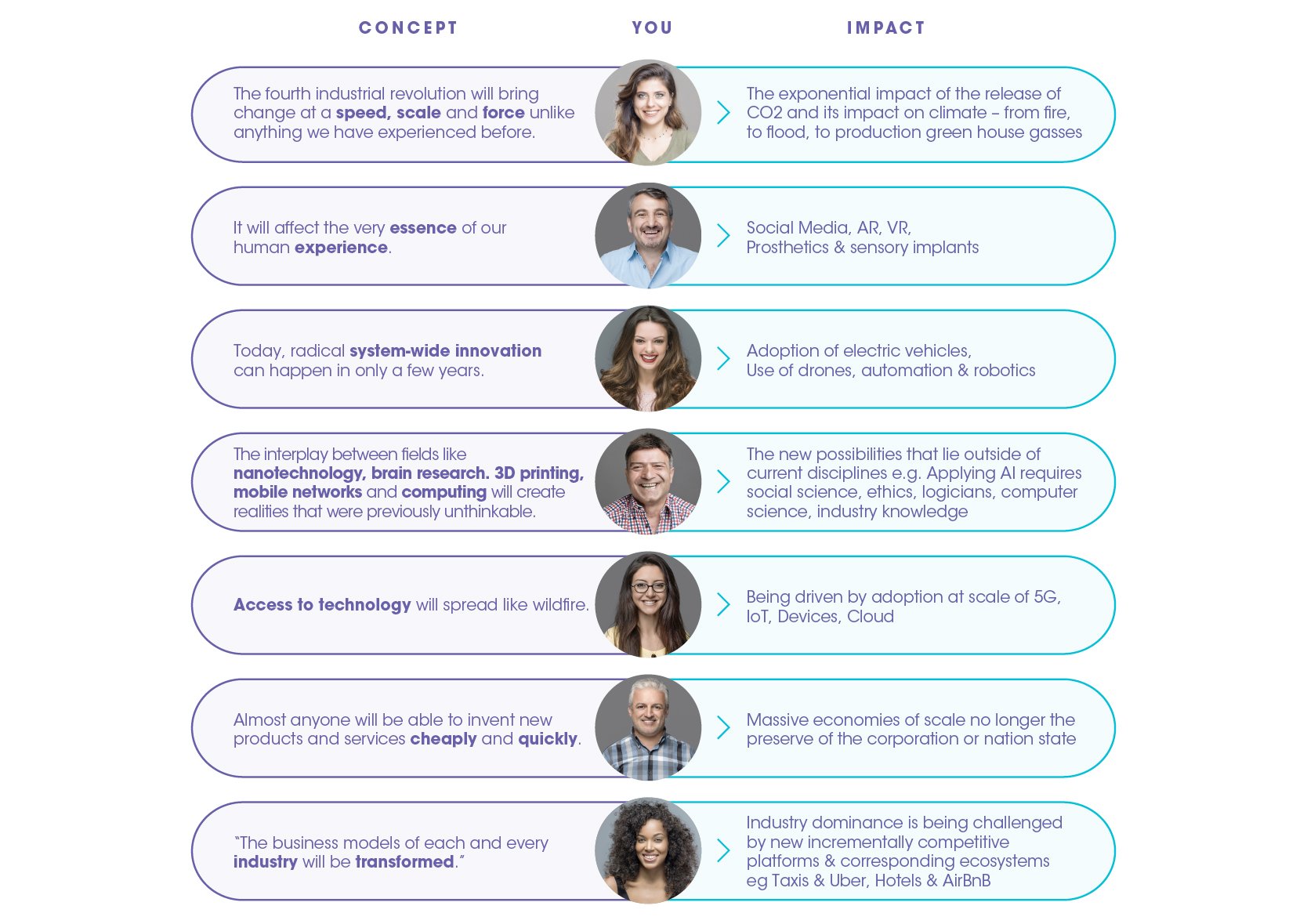
The line between work and play has progressively become blurred. The advent of BYOD (Bring Your Own Device) was an early sign and now the ubiquity of mobile devices that can just as effectively deliver business services as well as personal services have further blurred the line. Examples include Uber, Airbnb and YouTube.
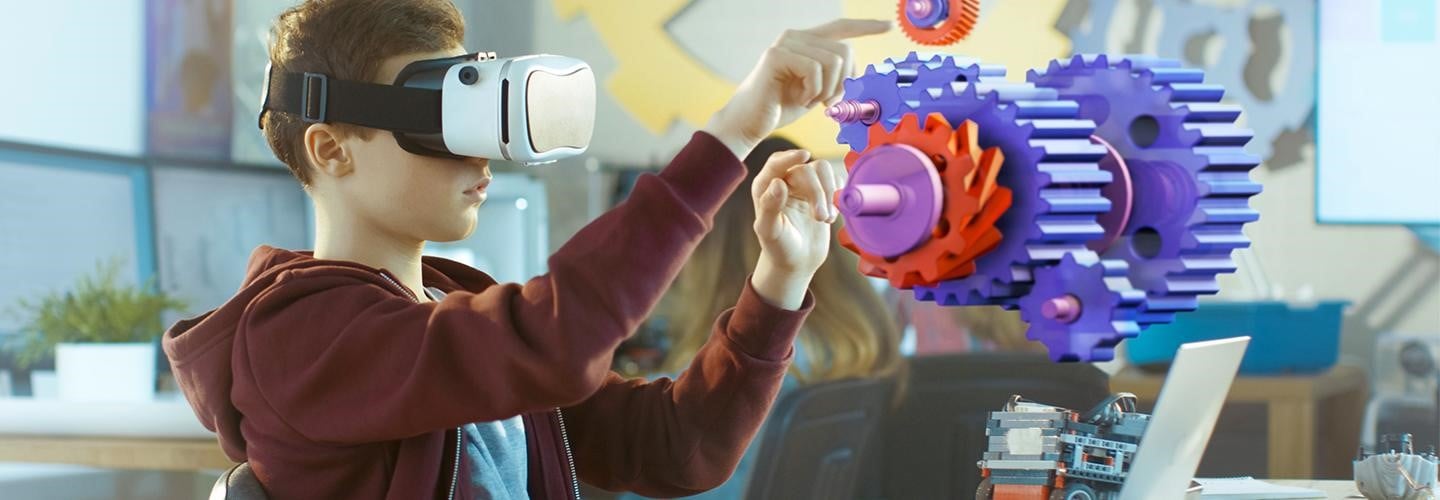
More fundamental perhaps than the change in demographics is the corresponding influences on different generations, and the digital divide that is being brought into focus. Put simply, the differences between digital natives - those that grew up with some sort of computing device as part of their everyday life - and those that did not, aka the digital immigrants. The influences on, expectations of, and in particular the embrace of a digital mode of working, is quite different between these two generations.
It is one where the traditional lines between everything from gender, privacy and work-life balance are blurred in ways unlike the experience of the digital immigrants amongst us. As the demographic makeup of the workforce shifts, the digital natives are now in ascendance in the workplace, and the digital immigrants are in decline. Perhaps a tipping point has been reached - nudged forward by the pandemic - where the embrace of a digital mode of doing business is now both a generational and sociological imperative, as much as a commercial one?
The pandemic serves as an excellent example of a macro-trend that has direct impact on the micro-adoption of digital technologies, processes and models.
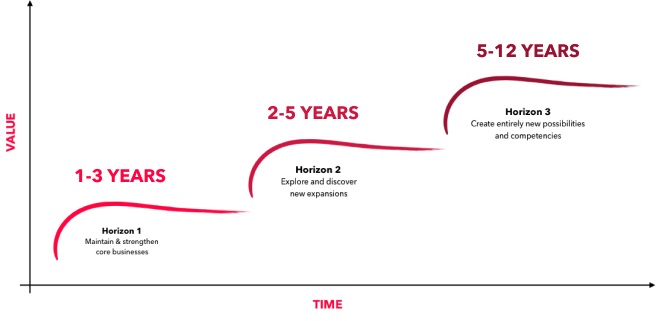
From Board of Innovation: What is the Three Horizons model and how can I use it?
The need to “defend from disruption” has historically been a driver for short-term innovation. The pandemic has brought forward what may have been more strategic or medium-term innovation initiatives, and in several industries triggered transformative innovation - which was being considered in the long-term.
A poignant example of this is the reinvention of how we use workspaces - transforming how we utilise a major asset class in enterprises. This is having substantial ripple effects in commercial office portfolios and asset management in general. The traditional assumptions of a 9-to-5, 5-day-a-week utilisation model is looking increasingly unlikely to be used in the post-pandemic world. Using digital technologies to monitor utilisation, social distancing and people’s temperature - using an array of sensors - is being incorporated into business operations.
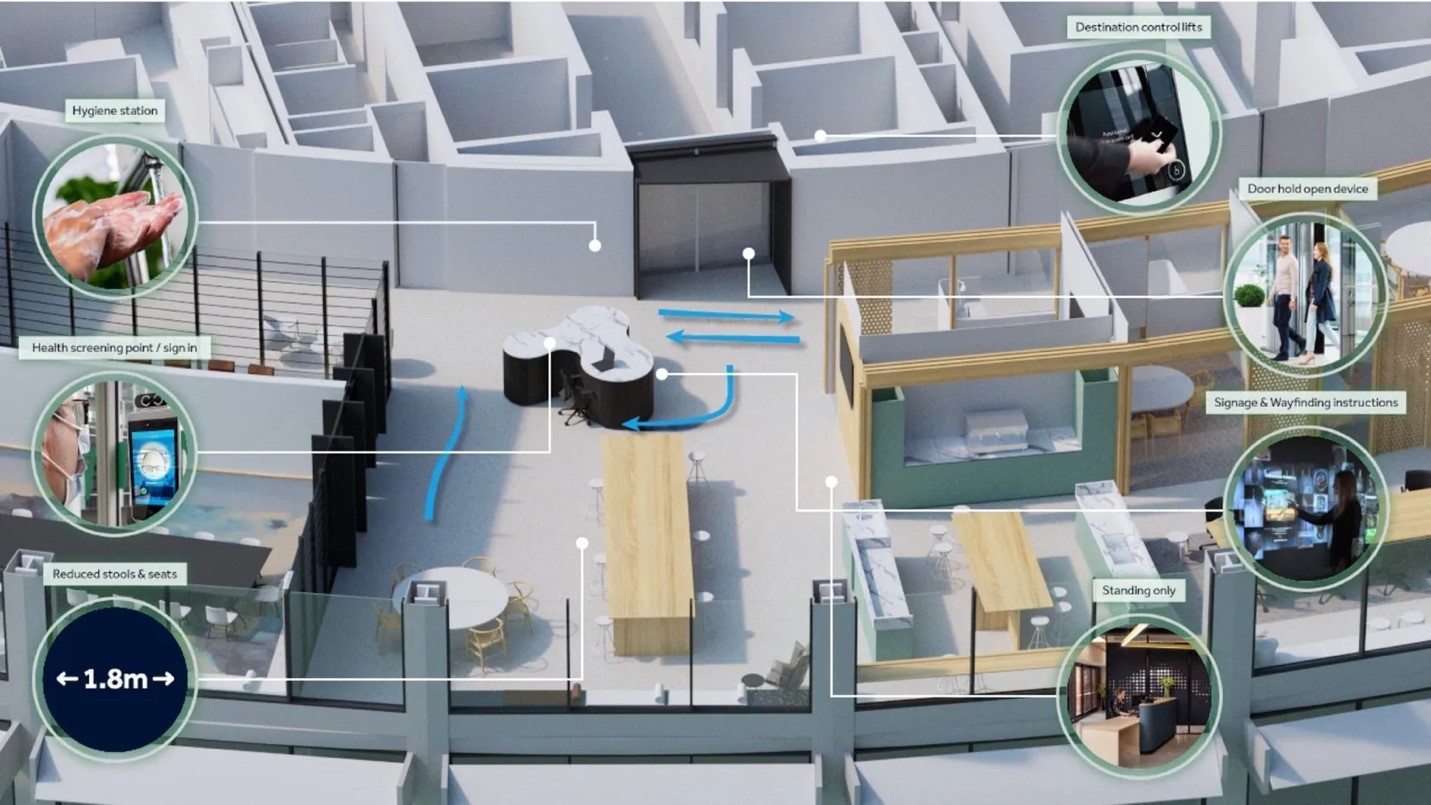
Curious about: How offices will change after coronavirus: BBC Worklife
Managing, tracing and optimising field-worker movements now has a public health as well as corporate responsibility dimension to it. The practice of digital innovation and how it can be used to sweat another asset class has been brought into sharp focus as enterprises evolve into the next-normal of the post-pandemic world.
In this series on unboxing digital transformation, we want to unpack those macro-level concepts that are fundamental to innovation in this decade. The 4th Industrial Revolution is not an abstract concept, it is something that we are encountering day-by-day, hour-by-hour and minute-by-minute. Across our personal life, our professional life, in healthcare, how we eat and in how we are influenced to elect our leaders.
Put in stark terms, mobile device usage is now directly impacting mental health, rates of suicide and levels of obesity. Contrast this with how these devices keep us safe from disease through contact-tracing, enhance well-being by monitoring exercise levels, heart rate and sleep, as well as enable us to express ourselves through mediums like TikTok. If the lines are forever blurred, then these macro-level forces are set to impact how we innovate both at work and at play. Irrespective of your industry the enablers and business model shifts are the same.
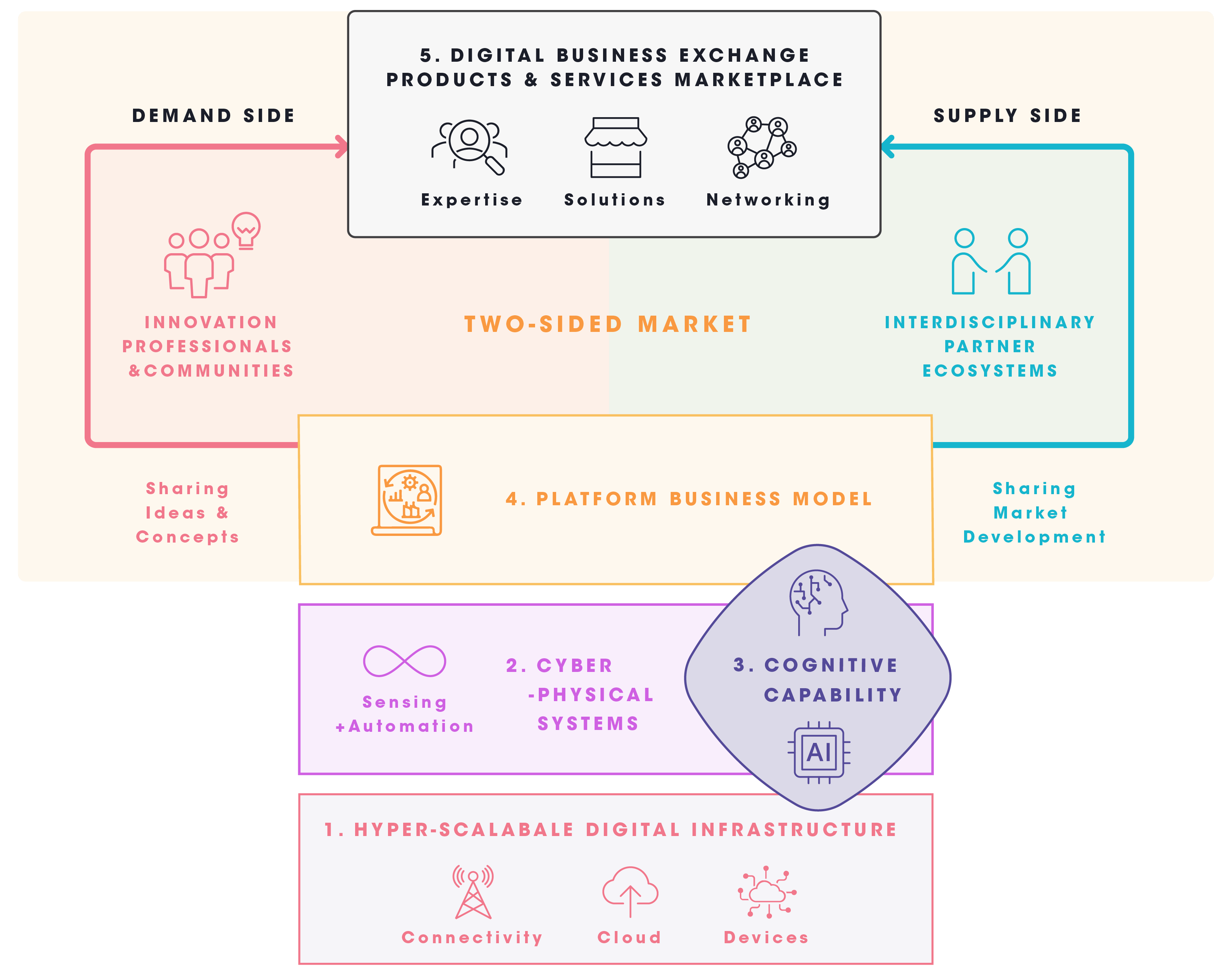
The technological enablers:
1. Hyper-Scalable digital infrastructure. The rise of on-demand cloud computing, low latency connectivity and access to a vast array of geographically dispersed sensors is changing what’s possible in realms where high levels of capital investment were a prerequisite.
2. Cyber-Physical systems. The ability for systems to sense, understand and respond in the physical realm - such as in self driving cars - will change the business models of industry.
3. The Cognitive paradigm shift. Artificial Intelligence and the 2nd machine age is paradoxically leading to a better quality of life and even greater inequalities.
And the new business models that leverage these enablers:
4. Business as a Platform. This business model is creating whole new ways to deliver business value.
5. How interdisciplinary ecosystems, communities of innovators, and the shift in the exchange of value, enables the digital business platform.
Each chapter will be a deep dive into these concepts and how they apply to you as you innovate within your business or explore spin-off opportunities. After all, innovation starts at home, and could be as humble as a kid who reviews toys.
NASA Astronaut Mike Mullane shares how His experiences in high-pressure situations have given him a unique perspective on being agile while managing risk.
The modern CFO must now leverage their understanding and use of technology to help drive business strategy. They need to be business-focussed technologists.
James Slezak helped The New York Times innovate and adopt a digital business model to invest and prosper in the face of disruption.
Please complete this form if you're ready to take part in the complimentary program of on demand talks, interactive workshops and LIVE ideation hackathon - as well as access useful Digital Transformation frameworks, methodologies and resources.